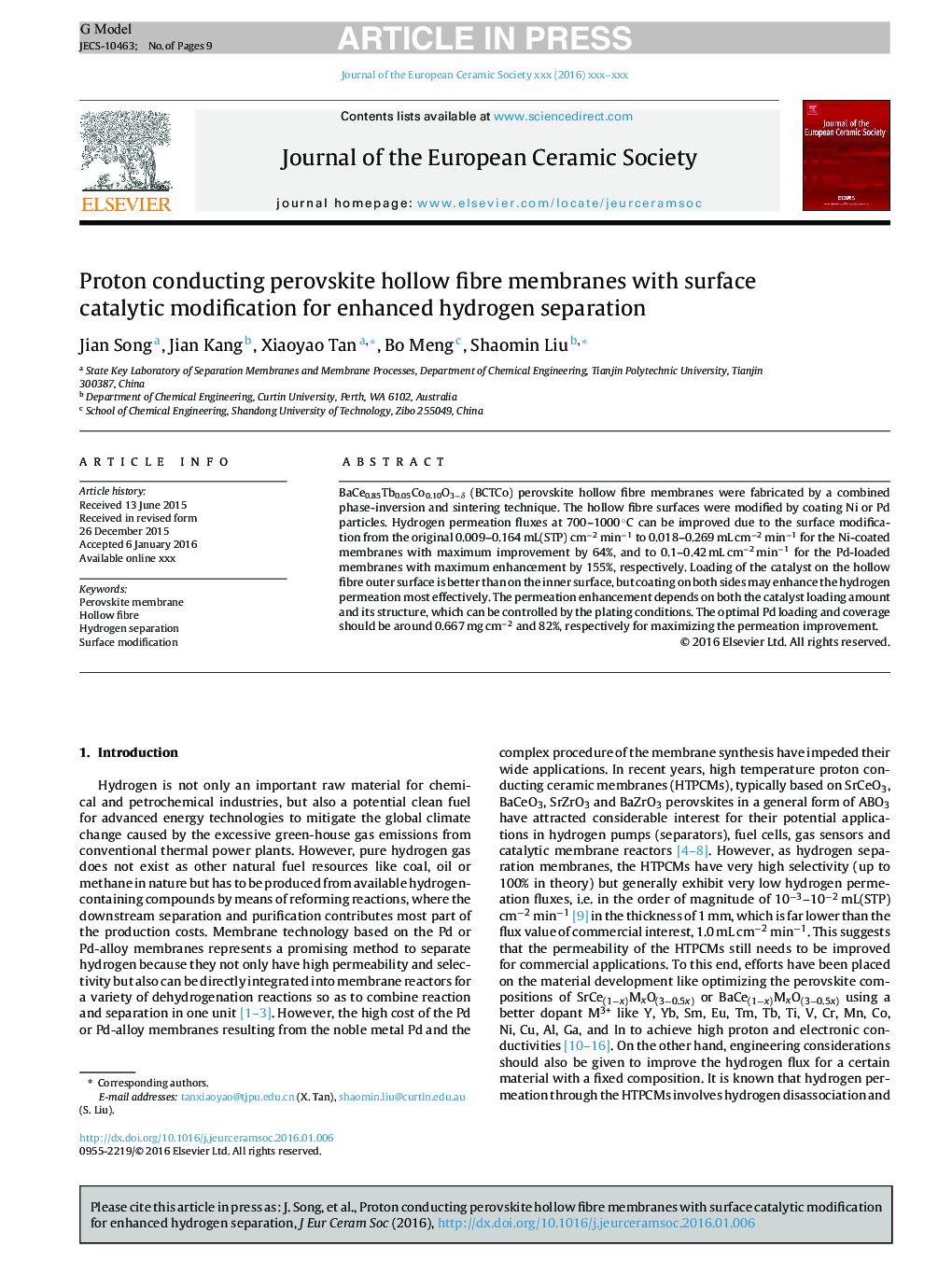| Article ID | Journal | Published Year | Pages | File Type |
|---|---|---|---|---|
| 10629287 | Journal of the European Ceramic Society | 2016 | 9 Pages |
Abstract
BaCe0.85Tb0.05Co0.10O3âδ (BCTCo) perovskite hollow fibre membranes were fabricated by a combined phase-inversion and sintering technique. The hollow fibre surfaces were modified by coating Ni or Pd particles. Hydrogen permeation fluxes at 700-1000 °C can be improved due to the surface modification from the original 0.009-0.164 mL(STP) cmâ2 minâ1 to 0.018-0.269 mL cmâ2 minâ1 for the Ni-coated membranes with maximum improvement by 64%, and to 0.1-0.42 mL cmâ2 minâ1 for the Pd-loaded membranes with maximum enhancement by 155%, respectively. Loading of the catalyst on the hollow fibre outer surface is better than on the inner surface, but coating on both sides may enhance the hydrogen permeation most effectively. The permeation enhancement depends on both the catalyst loading amount and its structure, which can be controlled by the plating conditions. The optimal Pd loading and coverage should be around 0.667 mg cmâ2 and 82%, respectively for maximizing the permeation improvement.
Related Topics
Physical Sciences and Engineering
Materials Science
Ceramics and Composites
Authors
Jian Song, Jian Kang, Xiaoyao Tan, Bo Meng, Shaomin Liu,
